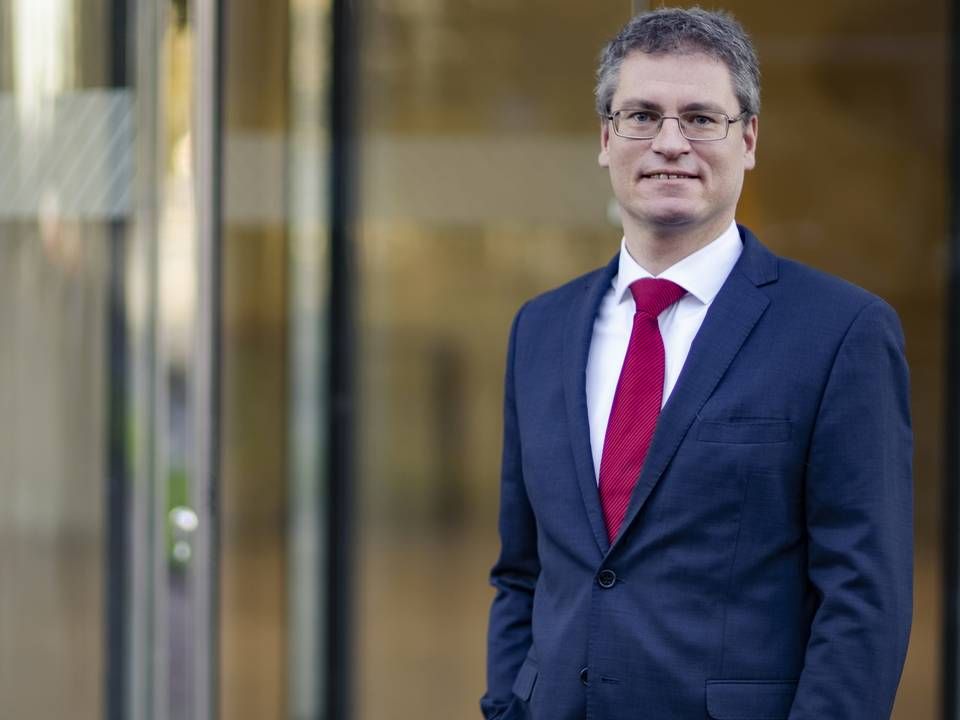Asset management industry fails to attract female fund managers

Although women are generally well-represented across the financial sector in the Nordic countries, the asset management industry has failed when it comes to the number of female fund managers.
The Women in Investing report by Morningstar, which was published in March, shows that the percentage of female fund managers in the region has only increased very slightly - from 11 to 12 percent in 20 years.
Globally, the percentage remains at 14 percent and has not changed in 20 years. The report, therefore, shows that in the Nordics, a region that normally prides itself on being one of the most gender equal regions in the world, the number of female fund managers is below the global average.
Chief investment officer at Danske Bank Asset Management, Christian Heiberg, is a bit surprised that the percentage in Denmark has not increased during the past two decades. However, he has not experienced an increase in the number of women applying to fill investment vacancies.
"I think we could have done better to communicate that our industry has changed. I actually kind of understand why we had a small number of female applicants 20 years ago, but the culture in asset management has changed a lot in the last 20 years," Heiberg tells AMWatch.
"I don’t see why a job in asset management isn’t attractive to women. You get a lot of academic challenges, the working hours are way more flexible and family friendly than they used to be and the salary is competitive relative to other industries," he says.
(The article continues below the chart)
"I can’t think of a better job"
In Norway, Anette Hjertø from DNB Asset Management thinks that it is important for female fund managers to be visible. Besides her role as Head of Absolute Return Investments at Norwegian bank's asset management arm, she is part of the Kvinner i Front-Finans network, which has 180 members.
The network seeks to get more women into front-end roles in the investment industry in Norway through visibility.
"As an industry, we haven’t been very successful at telling young people exactly what we do in portfolio management and that we have such an important role in allocating funding to the industries, companies and technologies which will shape our world tomorrow," says Anette Hjertø to AMWatch, adding:
"I honestly can’t think of a better job than being a portfolio manager: you get to use your interest in society and the economy as well as technical and analytical skills, all at once."
The character of a successful fund manager is male
Swedish investment professionals Claudia Stanghellini and Karolina Qvarnström think that there is a lot that needs to be done to increase the number of female fund managers in the region. They represent the Swedish organization KvinnoKapital - a network of women working in the asset management industry.
"The figure of a successful fund manager is often associated with the assumption that certain characteristics like risk taking, charisma, conviction, ego and testosterone make a person a good fund manager. Culturally, we tend to mistake confidence and strength for competence," says Claudia Stanghellini.
Besides representing KvinnoKapital, she is Head of External Management at the state buffer pension fund AP3.
Another assumption people have about working in asset management is that it means long working days, especially within investment and portfolio management, which are not compatible with family life.
"The problem with the senior level roles in asset management is that many of the women decide to quit the industry when they start a family - they quit before even reaching senior level. This is mostly due to the fact that the non-flexible working hours are not compatible with family life," says Karolina Qvarnström.
She is also Head of Product Development & Manager Selection at Länsförsäkringar Fondförvaltning, the fund company at Länsförsäkringar Bank.
Qvarnström thinks that the parental leave system in Sweden might help in the years to come. In Sweden, parents get 480 days off per child and are encouraged to split the leave.
"Our parental leave system has had a large impact on equality in Sweden in general. In the last 15 years, we have also experienced a change in the asset management industry, where it has become more normal for men to take a longer leave of absence," says Qvarnström.
The issue of maternity and paternity leave is an important factor in gender equality, and according to Christian Heiberg from Danske Bank Asset Management, the family friendly culture is not just a demand from women.
"As I see it, young people today expect flexible working hours and a career that is compatible with having a family. It’s not just the women. The men want it as well, and we have to make sure that our organization can deliver on these demands in the future," says Heiberg.
Global phenomenon
In the Women in Investing report, Morningstar concludes that the global average proportion of female fund managers has not changed in 20 years and remains very low.
"Women remain dramatically underrepresented among the ranks of mutual fund managers. Yet the fund industry itself acknowledges the advantages of institutional diversity: It has become a significant advocate for diversity at the publicly traded corporations it invests in," the report states.
Globally, there are a few success stories to highlight. In Hong Kong, Singapore, and Spain, more than 20 percent of fund managers are women, putting these countries above the global average.
In the Nordics, the success stories come from Finland and Sweden, which have increased their percentages from 10 to 15 percent and 8 to 15 percent respectively.
Norway has fewer female portfolio managers now than in 2000. In Denmark, the current percentage of female portfolio managers is almost the same as 20 years ago, 8 percent, which makes it the country with the lowest percentage in the Nordics.















